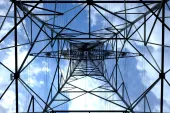
Can Grid investment & operational efficiency be improved through SMART GRID and DSM?
By Ehtesham UddinAs Asian Power requirements increasing and many countries in the area are facing problems to accommodate balance between their requirements and resources, Transmission grid investment and operation efficiency can be improved through smart utilization of “Demand Side Management”(DSM).
Quartet of “Safety, Security, Quality and Economy” are major objectives of power system operations.
Usually system security is attained through preventive measures. The system is maintained and prepared in advance to survive credible outages through “Reserve Management” for which requirements are specified as security standards in Grid Codes. These codes and agreements bind system operators to ensure availability of a designated amount of reserves.
Operationally, this preventive security is achieved by immediate dispatching of production units out of economic dispatch plan, after the credible outage, to ensure sustainability of the network. Consequently, the system is operated round the clock, less efficiently and uneconomically, in order to be able to survive with outages that occur infrequently.
Though this operational reserve management is simple, however task of system security is achieved at the expense of increased operating costs and low utilization of generation and network capacity.
Replacing “Preventive” actions with “Corrective” measures could be a novel idea. It permits power system operations at lower operating costs and with reduced network and generation capacity that leads to higher utilization of these assets, provided that disturbances that occur after outages of circuits or generators could be effectively eliminated by carrying out appropriate corrective actions.
Before the advent of Smart Grid technologies and DSM, in general system operators are engaged in matching “Load” versus “ Generation” through control of production only, for which they have to manage resources such as “spinning or operating reserves”, as no control exist over demand side.
However, now curtailment of load or “Load Management” at suitable places is one of the smart ways of the corrective plan.
This would allow maximum utilization of generation and hence to operate at lower costs, simultaneously as the Network congestion is reduced and hence transmission network investment could be diverse while maintaining the existing levels of security.
Advancements in Smart Grid technologies and DSM Techniques will facilitate the change in operating philosophy from “preventive” to “corrective” mode.
DSM is all about the coordination and common benefit of the suppliers and consumers, idea of moving from “preventive” to “corrective” mode is based on assumption that many of the consumers would find it monetarily attractive to curtail or postpone their load to help, correct and assist in an emergency situation that may arise in power network due to credible outages.
Coupling SMART GRID technology with DSM initiatives, smart meters along with properly designed software’s can provide a faster control over domestic and industrial loads such as air-conditions , heating equipment etc. we may consider them responsive or controllable loads and a slight variation in their load cycle through some signals similar to Automatic Generation Control (AGC)will results a regulation effect and thus help operational philosophy to shift from “preventive” to “ corrective” mode.
Technology providers should come up with these solutions and “stat of the art” control systems. A huge market requirement is awaited and we could see a major shift in power system operation’s regimen from “preventive” to “corrective” mode.
Ehtesham Uddin, Senior Engineer, Abu Dhabi Transmission & Dispatch Company (TRANSCO)
[email protected]




















 Advertise
Advertise







